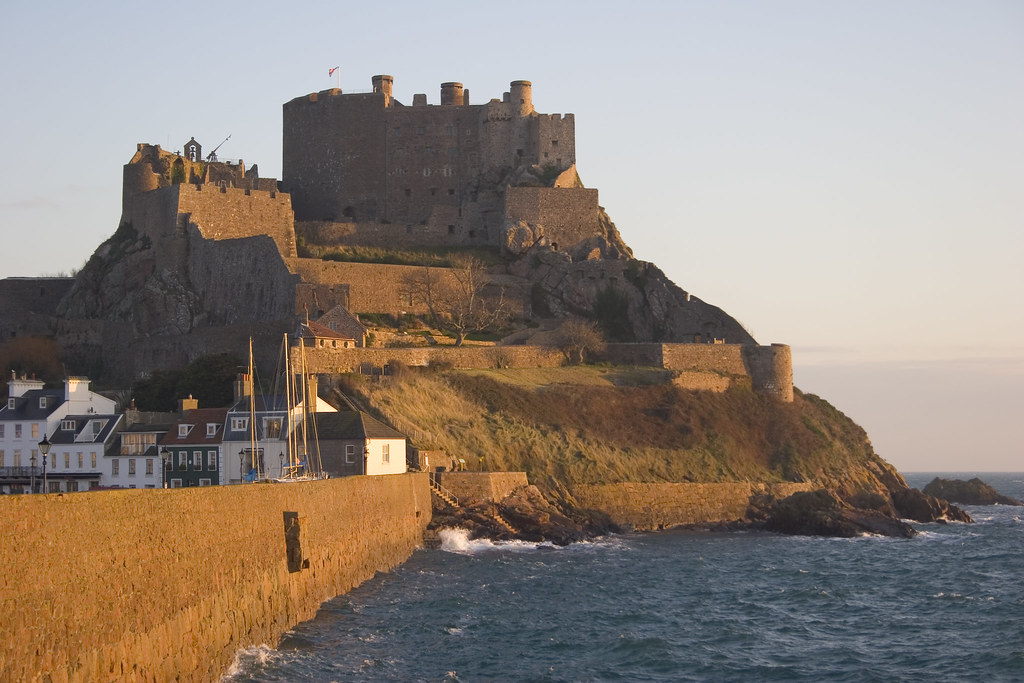History of Guernsey & Jersey
The historic traces of Channel Islands, Guernsey and Jersey, span from the Stone Age menhirs to the tunnels made during German occupation in World War II. Here are listed best of both islands.

Mont Orgueil
Mont Orgueil is a castle in Jersey Island. The site had been fortified in the prehistoric period, but the construction of the castle was undertaken following the division of the Duchy of Normandy in 1204. The castle was first mentioned in 1212.
Read more about Mont Orgueil
Castle Cornet
Formerly a tidal island, Cornet Rock was first fortified as a castle between 1206 and 1256, following the division of the Duchy of Normandy in 1204. In 1339 when a French force captured the island and occupied it for several years, Cornet was besieged and captured, and the garrison massacred.
Read more about Castle Cornet
Jersey War Tunnels
Jersey War Tunnels, often abbreviated to Hohlgangsanlage 8, also known as the German Underground Hospital was a partially completed underground hospital complex, built by German occupying forces during the occupation of Jersey during World War II. Over 1 km of tunnels were completed.
Read more about Jersey War Tunnels
Elizabeth Castle
Elizabeth Castle was built to the site of earlier Catholic St. Helier abbey. The monastic buildings were finally taken over by the Crown at the Reformation. Surviving buildings were used for military purposes.
Read more about Elizabeth Castle
Little Chapel
The Little Chapel created in July 1914 by Brother Déodat. He planned to create a miniature version of the grotto and basilica at Lourdes, the Rosary Basilica. It has been said that it is the smallest functioning chapel in Europe, if not the world, and it is believed to be the world’s smallest consecrated church. The chapel was originally 9 feet long by 4.5 feet wide.
Read more about Little Chapel
Fort Grey
Fort Grey is a Martello tower located on a rock in Rocquaine Bay. It was previously the site of local witches' Sabbaths.
Read more about Fort Grey
Castel Church
Pagans, Pirates and Romans have all been linked with the site now occupied by Castel Church. Outside the main door can be seen the Neolithic Statue Menhir found under the floor of the church during the 19th century. At its foot lie the stone seats for the official of the medieval court of Fief St Michel.
Read more about Castel Church
Le Creux ès Faies
Le Creux ès Faies is a Neolithic (3500 - 2000 BC), 8.5m long passage grave covered by a low mound. Two large capstones cover a rounded chamber but the passage capstones have long since gone. The mound on the north east side has been damaged and repaired though the first and last of the surrounding peristalith stones maybe in situ.
Read more about Le Creux ès Faies
La Varde Passage Grave
La Varde is an 11m long bottle shaped passage grave with 6 capstones and a small oval recess towards the rear. It dates back to Neolithic Age (3000-2500 BC). Originally covered by a mound 18m in diameter and a peristalith. The mound has been partially restored and two capstones are supported by modern pillars.
Read more about La Varde Passage Grave
La Hougue Bie
La Hougue Bie is a Neolithic ritual site which was in use around 3500 BC. Hougue is a Jèrriais/Norman language word meaning a \'mound\' and comes from the Old Norse word haugr. The site consists of 18.6m long passage chamber covered by a 12.2m high mound. The site was first excavated in 1925 by the Société Jersiaise.
Read more about La Hougue Bie